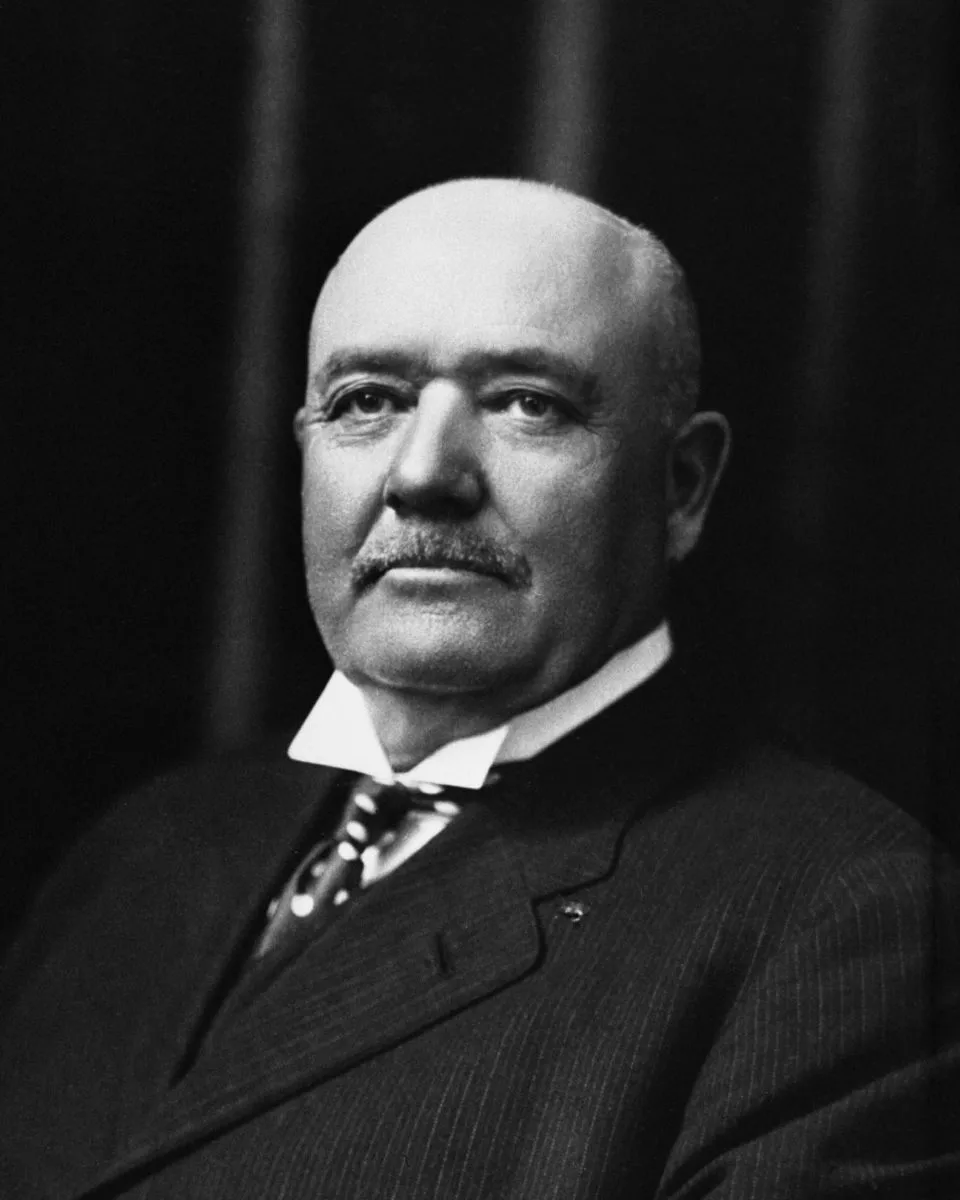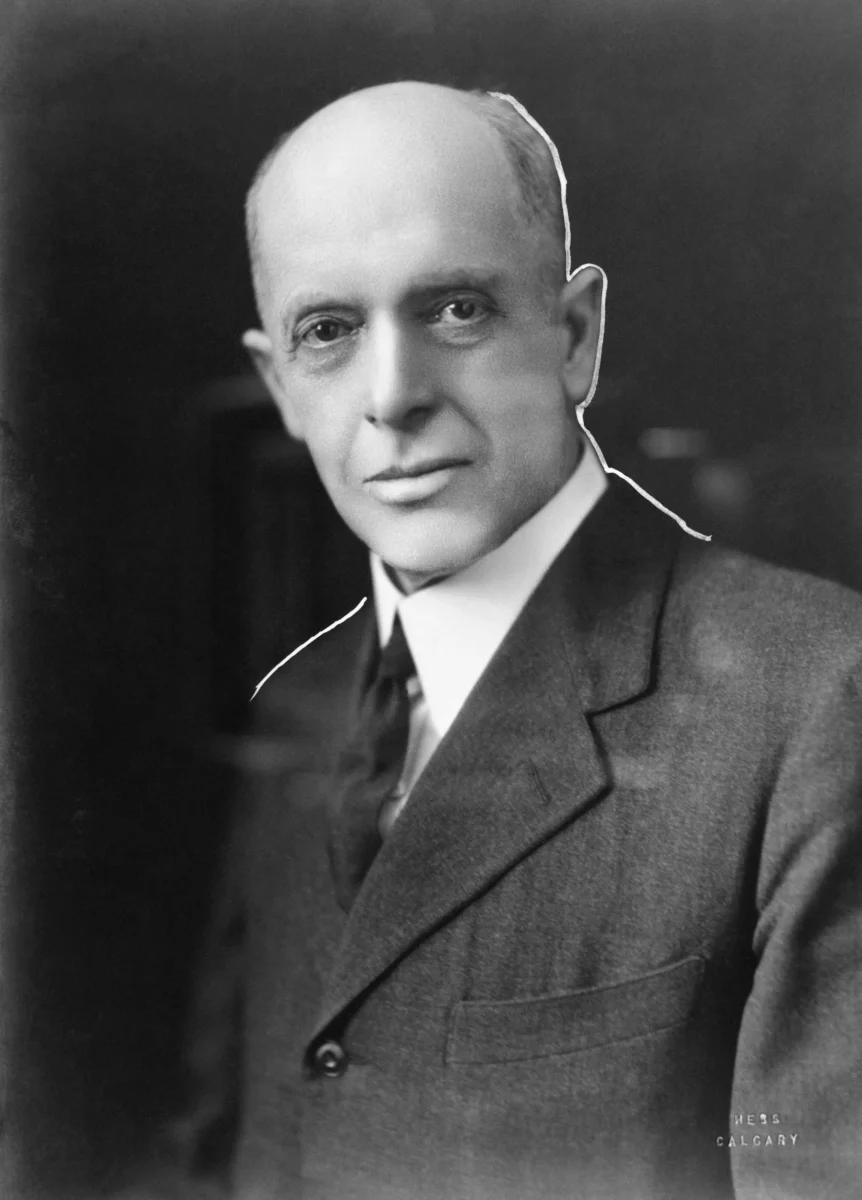William Roper Hull was born in England. He grew up in Dorset, but after his mother died, he moved to Canada in 1873 (at 17 years old) with his brother John (18), to make a new life. While working as a cowboy on the Cherry Creek Ranch west of Kamloops in British Columbia, William began ranching, breeding horses and raising cattle, as well as butchering and selling the cattle on the side. John, who worked for the Hudson’s Bay Company, joined brother William in his enterprises.
After securing a contract to supply beef to the CPR, William expanded their businesses to Alberta. In 1883 William led the way driving a herd of 1200 horses five hundred miles from Kamloops over the mountains and through the Crowsnest Pass. He sold his horses at Fort Macleod and to the Bar U Ranche (then known as the North West Cattle Company). William and John continued along the foothills up to Fort Calgary, where William had a vision. He declared, “There will be a city of at least 25,000. I see homes, schools, shops and churches with everything one needs for a happy life, and I will help to build it.” And build it he did.
William was back in Calgary by 1886. He brought cash, cattle and commitment to help build this great city of Calgary. With brother John remaining in Kamloops to run their B.C. operations, William began to establish his first of many Alberta land holdings when he bought the 25 Ranch west of Nanton. Subsequently he built Calgary’s first industrial abattoir and launched the largest meatpacking business in western Canada. In 1887 Hull secured the contract to provide the Canadian Pacific Rail with fresh beef. By creating Calgary’s first vertically integrated meatpacking business, Hull controlled the supply and the distribution (wholesale and retail) of his meat products. His land and his businesses expanded quickly during the Golden Age of Ranching. He shipped beef to the west coast of Canada and east all the way to Great Britain. William became known as “One of Calgary’s Cattle Kings”.
In 1892 Hull bought a farm on Fish Creek. He built an extensive, mechanical irrigation system, which improved the success of his yields enormously – more than ten fold. To manage the spectacular production of grain, Hull then introduced innovative hay-stacking machinery. Once again the visionary, William brought modern innovations to farming and ranching. He later renamed this farm the Bow Valley Ranche.
After dissolving the partnership with his brother in 1895, Hull built the elegant Bow Valley Ranche House where he entertained friends, politicians and dignitaries on a lavish scale. In 1903 he sold the Bow Valley Ranche and his meatpacking business to Patrick Burns and moved into Calgary. That same year, one of Calgary’s most eligible bachelors married Emmeline Mary Banister Ellis. Since Emmeline much preferred city-life to the countryside, William built the Hull Mansion, Langmore, at 1202 6th Street SW. Together they continued to be leaders in the social and philanthropic community in Calgary. They had no children.
Over the years, William acquired city land as well as his numerous ranches and farms. He became prominent in the real estate business in Calgary, erecting many major buildings including the Grain Exchange (Calgary’s first skyscraper and first building in western Canada to incorporate reinforced concrete); he also built the Alberta Block, Albion Block and Alberta’s first cultural building, the Hull Opera House. After the disastrous city fire in 1886 William used modern engineering, fireproof construction, central heating systems and Calgary’s trademark sandstone to construct bigger and safer buildings. William also supported the construction of local hospitals and churches.
Hull was a natural entrepreneur. It is not because of his many contributions as a businessman,
rancher or pioneer, however, that Hull has been written into history. He was truly one of Alberta’s most outstanding volunteers. William Roper Hull was a community minded citizen and a munificent philanthropist with a generous spirit and a genuine interest in the well-being of others.
Hull was especially dedicated to the welfare of the disadvantaged, especially children. He supported the Navy League, Boy Scouts, Lacombe Home, Red Cross, I.O.D.E., veterans, local churches and hospitals. At the time of his death in 1925, he continued to show his dedication to the community bequeathing the largest share of the Hull estate to the development of a home for “destitute and orphaned children”. This centre opened in 1962 and Hull Services continues to this day to help thousands of disadvantaged and traumatized children every year. “Beginning with only the clothes on his back and a good education, William Roper Hull created a frontier Calgary empire, and then gave away all of his life’s work as a legacy that continues to transform the lives of the city’s most vulnerable families. ” (A Magnificent Gesture)
References & Links
Biographi.ca
Fish Creek Provincial Park
Bow Valley Ranche
Hull Services
Glenbow Museum
CBE (William roper Hull school website)
A Magnificent Gesture by Hull Services, 2012
William Roper Hull School



